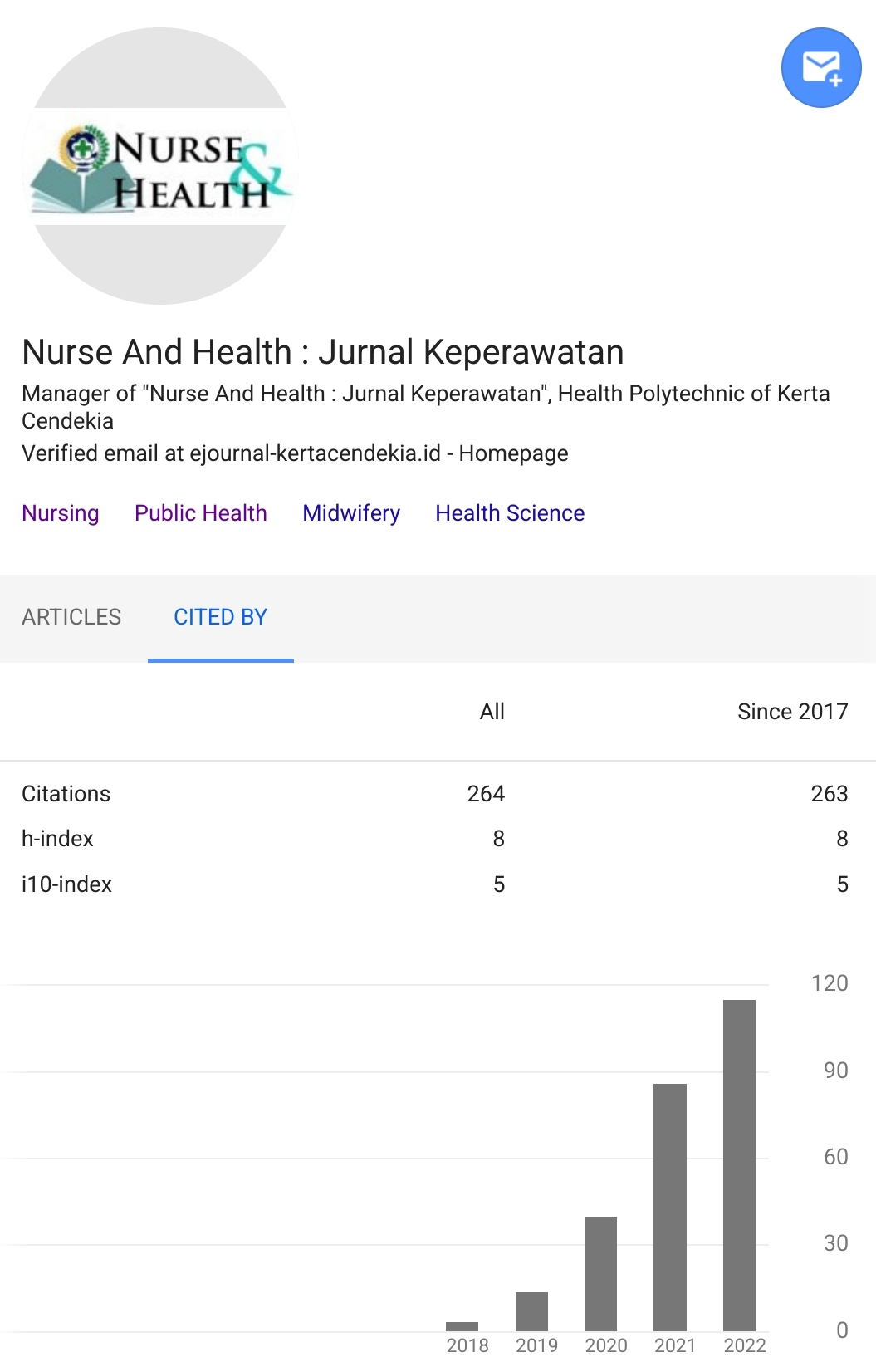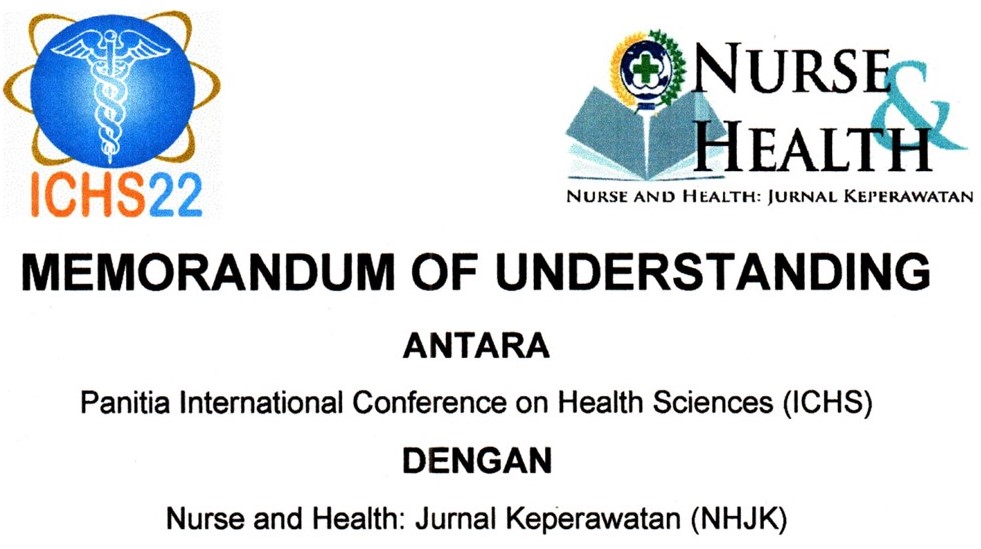ANALYSIS OF PREVENTION BEHAVIORS OF PULMONARY TUBERCULOSIS TRANSMISSION QUESTIONNAIRE (PBPTTQ)
DOI:
https://doi.org/10.36720/nhjk.v9i1.145Abstract
Background: Prevention of pulmonary tuberculosis transmission behavior is also one of the keys to the increased incidence of pulmonary tuberculosis. Unhealthy behavior in patients with pulmonary tuberculosis can be caused due to lack of information about TB in the community so that they lack responsibility for the tuberculosis transmission.
Objective: This study aimed to analyze the Prevention Behaviors of Pulmonary Tuberculosis Transmission Questionnaire (PBPTTQ) to see whether this questionnaire can be used to assess habits in preventing pulmonary tuberculosis transmission in the community.
Methods: The design used in this study was cross-sectional design. This study was conducted in the Public Health Center of Medokan Ayu, Surabaya. The sample in this study were 30 people with positive smear pulmonary tuberculosis who are in the working area of Public Health Center of Medokan Ayu, Surabaya. This study used Prevention Behaviors of Pulmonary Tuberculosis Transmission Questionnaire (PBPTTQ). PBPTTQ consists of 15 items with 11 items that are positive questions and 4 items that are negative questions. PBPTTQ using Likert Scale with 5-point rating scale. Data analysis of Prevention Behavior of Pulmonary Tuberculosis Transmission Questionnaire used statistical analysis using SPSS 21. Data analysis performed was mean, standard deviation, I-CVI, and Cronbach Alpha.
Results: Prevention Behaviors of Pulmonary Tuberculosis Transmission Questionnaire (PBPTTQ) has a high enough reliability value marked by a Cronbach Alpha value of .639. In addition, the validity test of this questionnaire found that I-CVI = .84.
Conclusion: Based on the results of the study, Prevention Behaviors of Pulmonary Tuberculosis Transmission Questionnaire (PBPTTQ) can be used to assess pulmonary transmission prevention behavior in the community.
Â
Key words: Prevention Behavior, pulmonary tuberculosis transmission, public health center, questionnaire.
Downloads
References
Departemen Kesehatan Republik Indonesia. (2013). TB Masalah Kesehatan Dunia. Retrieved from http://depkes.go.id.
Guilford, J. P., & Fruchter, B. (1956). Fundamental statistics in education and psychology. New York: McGraw-Hill.
Ismawati, C., Pebriyanti, S., & Proverawati, A. (2010). Posyandu (Pos Pelayanan Terpadu) dan Desa Siaga. Mulia Medika: Yogyakarta.
Jaji, J. (2010). Upaya Keluarga dalam Pencegahan Penularan Tuberkulosis (Tb) Paru ke Anggota Keluarga Lainnya di Wilayah Kerja Puskesmas Sidorejo Pagaralam Tahun 2010. Jurnal Ilmu Kesehatan Masyarakat, 1(3), 177-187.
Kementerian Kesehatan RI. (2013). Pedoman Nasional Pelayanan Kedokteran Tata Laksana Tuberkulosis. Jakarta: Kementerian Kesehatan RI.
Kementerian Kesehatan RI. (2015). Profil Kesehatan Indonesia 2015. Jakarta: Direktorat Jendral Pengendalian Penyakit dan Kesehatan Nasional.
Lynn, M. R. (1986). Determination and quantification of content validity. Nursing research.
Putra, K. W. R., & Toonsiri, C. (2019). FACTORS RELATED TO THE SUCCESSFUL TREATMENT OF TUBERCULOSIS: A LITERATURE REVIEW. Belitung Nursing Journal, 5(4), 136–146. doi:10.33546/bnj.749
Rukmini, R., & Chatarina, U. W. (2011). Faktor-faktor yang Berpengaruh terhadap Kejadian Tb Paru Dewasa di Indonesia (Analisis Data Riset Kesehatan Dasar Tahun 2010). Buletin Penelitian Sistem Kesehatan, 14(4), 20972.
Somantri, Irman. (2009). Asuhan Keperawatan pada Klien dengan Gangguan Sistem Pernapasan. Jakarta: Salemba Medika.
Suherni, N. A. D., & Maduratna, M. (2013). Analisis Pengelompokan kecamatan di kota surabaya berdasarkan faktor penyebab terjadinya penyakit tuberkulosis. Jurnal Sains dan Seni ITS, 2(1), D13-D18.
Sukoco, W., & Edi, N. (2011). Hubungan Antara Perilaku Pencegahan dan Kepatuhan Berobat Penderita TB di Indonesia. Buletin Penelitian Sistem Kesehatan, 14(1), 68-74.
Widodo, A., & Setiyadi, N. A. (2013). Promosi Perilaku Kesehatan Masyarakat untuk Mencegah Penyakit DBD dan TBC.
Downloads
Additional Files
Published
How to Cite
Issue
Section
Citation Check
License
Authors who publish with Nurse and Health: Jurnal Keperawatan agree to the following terms:
- Authors retain copyright licensed under a Creative Commons Attribution-NonCommercial 4.0 (CC BY-NC 4.0), which allows others to remix, tweak, and build upon the authors' work non-commercially, and although the others' new works must also acknowledge the authors and be non-commercial, they don't have to license their derivative works on the same terms.
- Authors are permitted and encouraged to post their work online (e.g., in institutional repositories or on their website) prior to and during the submission process, as it can lead to productive exchanges, as well as earlier and greater citation of published work (See The Effect of Open Access). Authors can archive pre-print and post-print or publisher's version/PDF.









